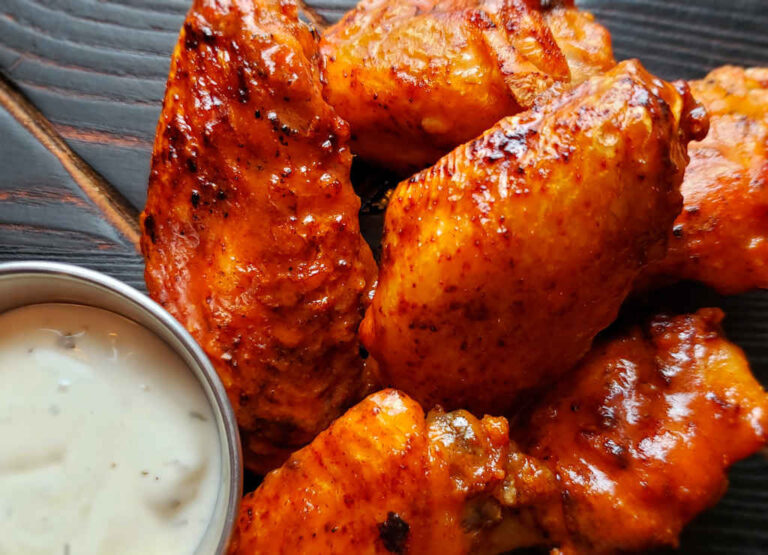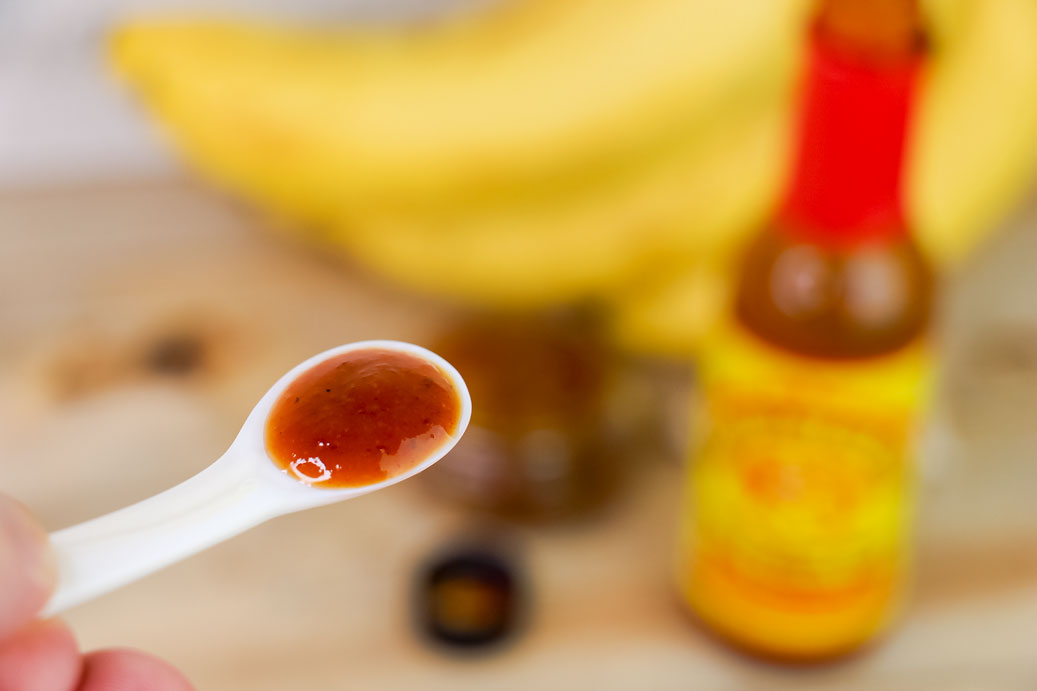Are you tired of watery, runny wing sauce that drips off your chicken instead of clinging to it? I’ve been there too, and it’s seriously frustrating! After years of experimenting (and plenty of messy failures), I’ve finally mastered the art of thickening chicken wing sauce to get that perfect consistency that coats each wing beautifully
In this guide I’ll share my best methods for thickening chicken wing sauce without compromising flavor. Whether you’re making buffalo wings for game day or experimenting with your own signature sauce, these techniques will help you achieve that restaurant-quality thickness that keeps your guests coming back for more.
Why Thick Wing Sauce Matters
Before diving into the methods let’s understand why thick wing sauce is so important
- Enhanced Flavor Delivery: Thicker sauce clings better to wings, ensuring you get maximum flavor in each bite
- Improved Texture: A thicker sauce creates a more satisfying mouthfeel
- Less Mess: Nobody wants sauce dripping everywhere during eating
- Visual Appeal: Thick, glossy sauce simply looks more appetizing than thin, watery sauce
I remember serving wings at a Super Bowl party where my sauce was way too thin – it pooled at the bottom of the plate instead of coating the wings. My friends were polite, but I knew the sauce wasn’t right. That’s when my thickening obsession began!
Method 1: The Starch Slurry Technique
This is probably the most common and reliable method for thickening wing sauce.
What You’ll Need:
- 1-2 tablespoons cornstarch (or arrowroot or tapioca starch)
- Equal amount of cold water
- Whisk
Steps:
- Mix cornstarch with cold water in a small bowl until smooth (using cold water prevents clumping)
- Bring your wing sauce to a gentle simmer over medium heat
- Slowly drizzle the starch slurry into the simmering sauce while continuously whisking
- Simmer for 1-2 minutes until the sauce thickens to desired consistency
- If needed, add more slurry in small amounts
Pro Tip: Start with less cornstarch than you think you need. You can always add more, but it’s hard to fix a sauce that’s become too thick or gloppy.
Method 2: Reduction – Concentrating Flavors
This method takes a bit more time but enhances flavor while thickening.
Steps:
- Place your wing sauce in a saucepan over medium-low heat
- Bring to a gentle simmer (not a boil)
- Allow to simmer uncovered, stirring occasionally
- Continue simmering until the sauce reduces and thickens (typically 15-30 minutes)
- Skim off any foam that rises to the surface
I love this method because it intensifies the flavors as it thickens. Just be patient and keep the heat low to avoid burning or over-reducing.
Method 3: Butter Emulsification
Adding cold butter creates a rich emulsion that thickens sauce beautifully.
Steps:
- Cut cold butter into small cubes
- Heat your wing sauce until hot but not boiling
- Remove from heat
- Whisk in cold butter one cube at a time
- Continue whisking until butter is fully incorporated and sauce is smooth
This method adds a silky richness to your sauce. One time I was making sauce for a friend who loves extra buttery buffalo wings, and this technique gave me the perfect velvety texture they were looking for!
Method 4: Adding Natural Thickeners
These ingredients add thickness while enhancing flavor:
- Honey or Maple Syrup: Adds sweetness and viscosity
- Tomato Paste: Adds body and a slight tomato flavor
- Molasses: Adds richness and thickness
Usually 1-2 tablespoons per cup of sauce is enough to make a noticeable difference without overwhelming the original flavor.
Method 5: Using Xanthan Gum
Xanthan gum is a powerful thickening agent popular in commercial sauces.
Steps:
- Measure a very small amount (¼ teaspoon or less per cup of sauce)
- Sprinkle slowly into sauce while blending with an immersion blender
- Allow to rest for a few minutes to reach full thickness
Warning: Be extremely careful with xanthan gum – a little goes a LONG way! I once added too much and ended up with something closer to wing jello than wing sauce. Not appetizing!
Method 6: The Roux Method
A roux is a mixture of equal parts flour and fat cooked together.
Steps:
- Melt 2 tablespoons butter in a separate pan
- Add 2 tablespoons flour and whisk continuously
- Cook for 1-2 minutes until slightly golden
- Gradually whisk in your wing sauce
- Simmer until thickened
This works well for cream-based wing sauces but might alter the flavor profile of traditional buffalo sauce.
Method 7: Egg Yolk Technique
This method creates a rich, creamy texture but requires careful technique.
Steps:
- Whisk 1-2 egg yolks in a bowl
- Gradually add a small amount of hot (not boiling) sauce to the yolks while whisking
- Once tempered, slowly add the yolk mixture back to the sauce
- Heat gently while stirring until thickened
This method works best for milder sauces where the egg flavor won’t compete.
Common Mistakes to Avoid When Thickening Wing Sauce
Trust me, I’ve made all these mistakes so you don’t have to!
- Adding starch directly to hot sauce: This creates lumps that are impossible to remove
- Boiling vigorously: Gentle simmering is key for even thickening
- Using too much thickener: Start with less than you think you need
- Not stirring enough: Constant stirring prevents scorching and ensures even thickening
- Overcooking starch-thickened sauces: This can actually cause them to thin out again
Thickening Methods Comparison
| Method | Texture Effect | Flavor Impact | Time Required | Difficulty |
|---|---|---|---|---|
| Starch Slurry | Smooth, glossy | Neutral | 5 minutes | Easy |
| Reduction | Concentrated, intense | Enhances existing flavors | 15-30 minutes | Easy |
| Butter | Rich, creamy | Adds buttery richness | 5 minutes | Medium |
| Natural Thickeners | Varies by ingredient | Adds sweetness or richness | 5 minutes | Easy |
| Xanthan Gum | Very thick, potentially gelatinous | Minimal if used correctly | 5 minutes | Difficult |
| Roux | Velvety, opaque | Slightly floury if not cooked well | 10 minutes | Medium |
| Egg Yolk | Rich, creamy | Subtle egg flavor | 10 minutes | Difficult |
FAQ: Your Wing Sauce Thickening Questions Answered
How much cornstarch should I use to thicken my wing sauce?
Start with 1 tablespoon of cornstarch mixed with 1 tablespoon of cold water per cup of sauce. You can always add more if needed, but it’s harder to fix sauce that’s too thick.
Can I use flour instead of cornstarch?
Yes, but flour has about half the thickening power of cornstarch and needs to be cooked longer to remove the raw taste. Consider making a roux instead of a slurry if using flour.
Will the sauce thicken more as it cools?
Absolutely! Most thickened sauces continue to thicken as they cool. Keep this in mind and stop thickening when your sauce is slightly thinner than your desired final consistency.
My sauce is already too thick. How can I thin it out?
Add a small amount of chicken broth, water, or vinegar (depending on your sauce base) one tablespoon at a time until you reach the desired consistency.
How do I store thickened wing sauce?
Store in an airtight container in the refrigerator for up to 3-4 days. The sauce may thicken further when cold; simply reheat gently and add a splash of liquid if needed.
Real-World Thickening Success Stories
I recently catered my brother’s birthday party and used the reduction method combined with a touch of honey for my honey-garlic wing sauce. Everyone raved about how the sauce coated the wings perfectly without pooling on the plate. One guest even asked if I’d bought the sauce from a restaurant – best compliment ever!
Another time, when making buffalo wings for a potluck, I used the butter emulsification method. The wings stayed saucy and delicious even after sitting out for an hour – no sad, dry wings here!
Final Thoughts
Thickening chicken wing sauce is part science, part art. The perfect consistency allows the sauce to cling to wings without being gloppy or pasty. My personal preference is using the reduction method for pure buffalo sauce and the starch slurry for sweeter or more complex sauces.
Remember that practice makes perfect! Don’t be afraid to experiment with different methods to find what works best for your favorite wing sauce recipes. And most importantly, have fun with it – cooking should be enjoyable, even when you’re obsessing over sauce thickness like I do!
What’s your favorite method for thickening wing sauce? I’d love to hear about your experiences in the comments below!

Add fresh fruits or veggies
If you made a homemade hot sauce, chances are you used plenty of solid ingredients. Popular choices are hot peppers (duh), onions, garlic, carrots, pineapple, and other fruits.
Top it off with some vinegar, and you’ve got yourself some tasty hot sauce! Be careful though, because too much liquid can lead to a splashy mess.

If you don’t want to simmer your sauce to thicken it, simply add more ingredients that will compliment the flavor. A safe choice is to add sweet fruits, such as peaches or pineapple, or roast up some carrots and blend them into the sauce.
Foods to add to thicken hot sauce:
- Peaches
- Pineapple
- Mango
- Orange
- Lemon
- Cherries
- Blueberries
- Carrots
- Onion (fresh or cooked)
- Red peppers (fresh or dried)
- Garlic (fresh or roasted)
Tip: Frozen fruits are cheap, pre-chopped, and make a great addition to hot sauce.
Both the sugars and the natural pectin found in many fresh ingredients will help thicken up hot sauce. Start by adding about 1/8th the volume of the sauce and blending, adding more until the right texture is reached.
Adding a touch of lemon juice can also help thicken your hot sauce. The acidic juice will lower pH and allow pectin to group together, “setting” the sauce.
Simmer it down
The simplest method of thickening up hot sauce is to simply simmer it over low heat. This method is also called “reduction,” as it essentially reduces the volume of the sauce over time.
Keep in mind: This method only works if your sauce contains sugars, solid ingredients, or thickening agents. A primarily liquid-based hot sauce may not thicken up just by simmering.
By simmering the sauce, the liquids are turned into steam. It can take anywhere from 10-30+ minutes, depending on how much liquid you want to remove.
As the sauce cooks, avoid a full boil, as high temperatures can negatively impact the flavor of the hot sauce. Also, while the sauce is hot (temperature-wise), it will be thinner than when fully cooled, so try to account for this.
